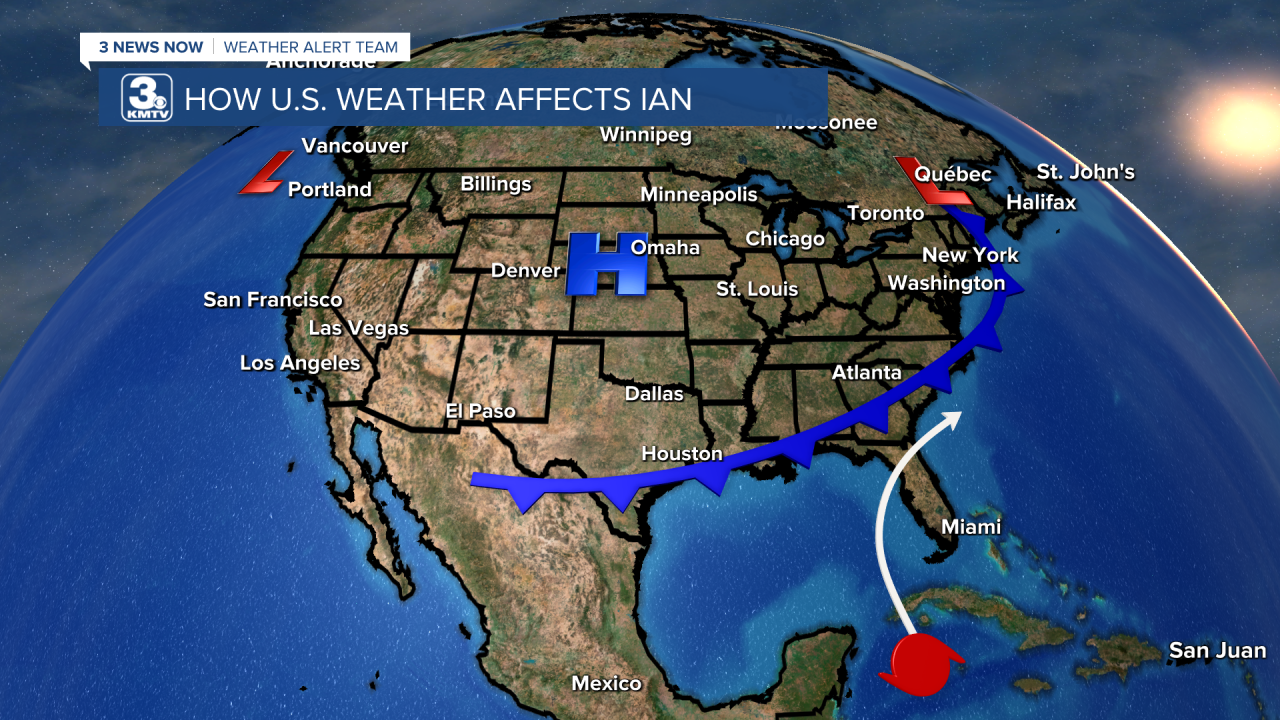This week all eyes are focused on the tropics, which have been quiet so far this year, but even the "quiet" seasons can have big impacts. Hurricane Ian moved through the Caribbean Sea into the Gulf Coast, affecting places like Cuba and Florida. Impacts are expected to be wide-ranging from damaging winds, heavy rainfall, storm surge, and tornadoes. Those who have interests in Florida, Cuba, or the rest of the Caribbean this week should pay extra careful attention to this situation.
As Hurricane Ian approaches, the National Hurricane Center (NHC) has a special request. They have requested that many National Weather Service offices across the country, including Omaha, launch special weather balloons through the week ahead of the hurricane. Offices from Florida to Nebraska to even Seattle, Washington are launching balloons to help the NHC in forecasting Ian. Why? How does the weather conditions in Seattle or Omaha contribute to Hurricane forecasting, we are nowhere near the Gulf coast?
The answer is because the weather in Omaha, or Seattle, or anywhere else in the country can and often directly leads to the track of a hurricane near the United States!
First of all, various National Weather Services in the country launch weather balloons every day at 7am and 7pm (central time), no matter the weather. Launching weather balloons allows the NWS to measure temperature, winds, and moisture in the atmosphere from the surface all the way to the stratosphere in some cases. Each National Weather Service office launches them at the same time, which gives forecasters an accurate and complete snapshot into the entire atmosphere twice a day.


On top of what the National Weather Service already does, the NHC has requested most offices in the US with the exception of the southwest to issue a special balloon launch at 1am and 1pm (central time). This now gives us a look at the atmosphere four times a day instead of twice, and allows us to more accurately predict our weather. Special soundings are relegated to circumstances of extreme weather, such as severe weather, hurricanes, or winter storms.

So why does this influence hurricanes? Weather moves, generally from west to east across the United States. Therefore, the weather that occurs over the Rocky Mountains one day will move to the east, affecting the Midwest the next day then the East Coast after that. This is how weather systems move, and they are all connected. So as Ian approaches the United States, it will run into the various weather systems that are over the country. Having an accurate picture of the movements of the atmosphere will give the NHC that much more information to forecast Ian and its impacts.
Remember that cold front which brought us the fall weather last Wednesday? Well that cold front is still in the United States, sitting along the coastlines. There is also a high pressure over Nebraska, responsible for our sunny and cooler weather this week. These two systems will act as steering forces for Ian, guiding it into Florida than someplace like Louisiana or Texas. So the NHC want's to know the movements of both of these systems as accurately as possible.

Eventually, the dip in the jet stream over the eastern United States will also play a role in Ian in steering it towards Florida.

Weather is interconnected, the weather that happens one place will influence the weather happening someplace else. It is not only in the United States, but globally. Weather in Europe and Asia can impact weather in North America. Therefore, forecasting the weather is truly a community-driven thing. The cooperation between the NHC, NWS, and other meteorologists is what can provide the most accurate forecasts so those in the path of any hurricane or major storm can take the steps to save their lives.


